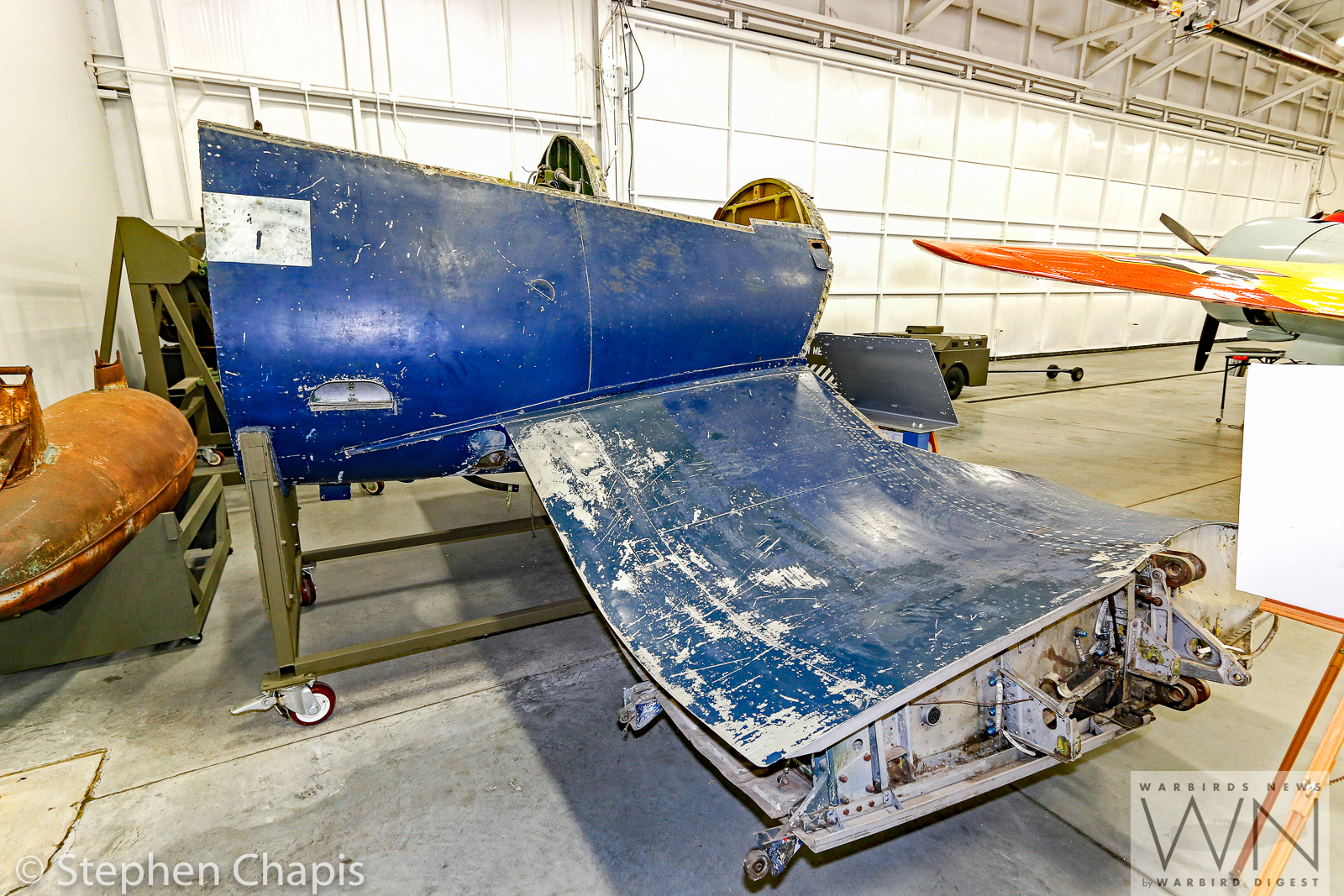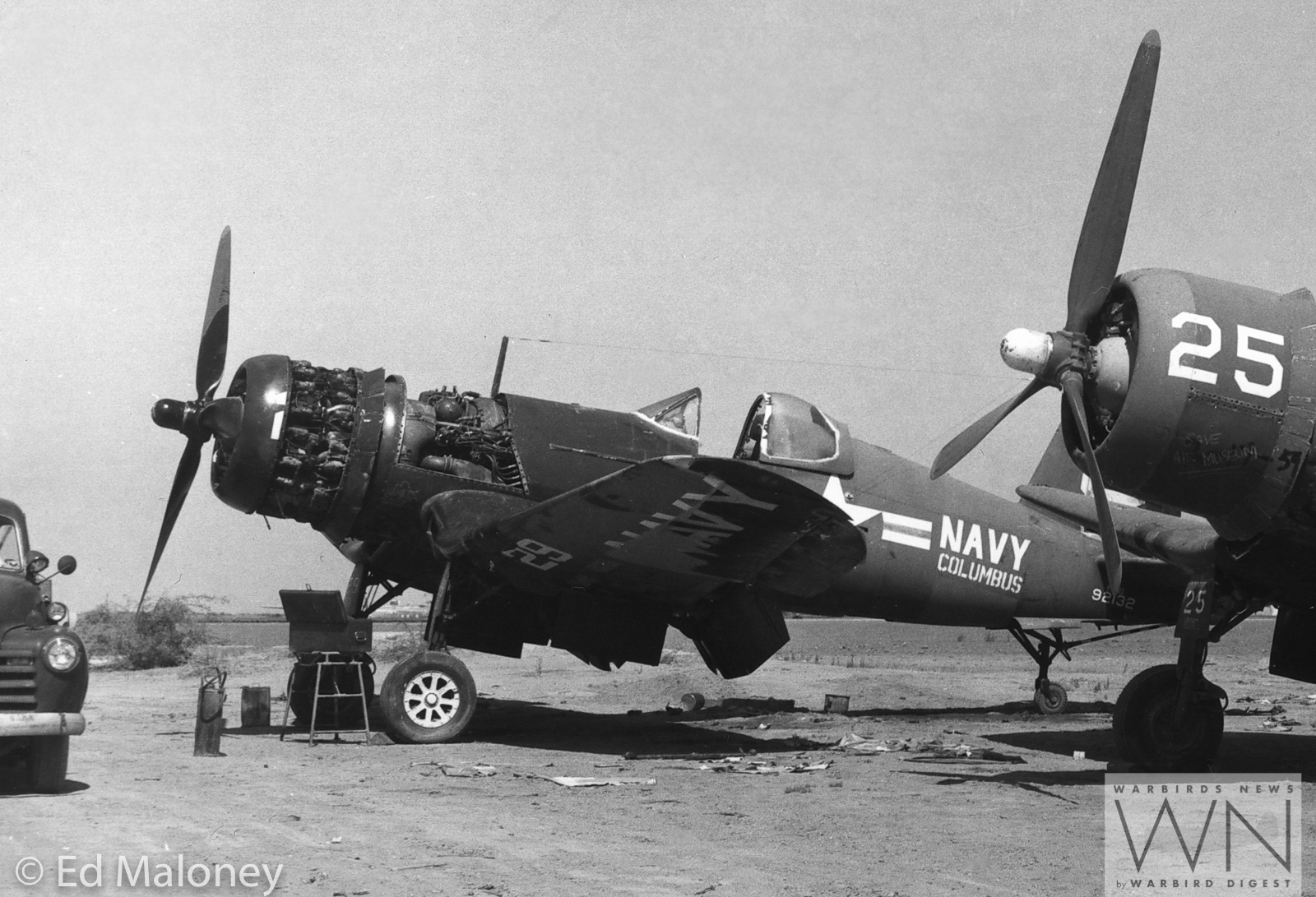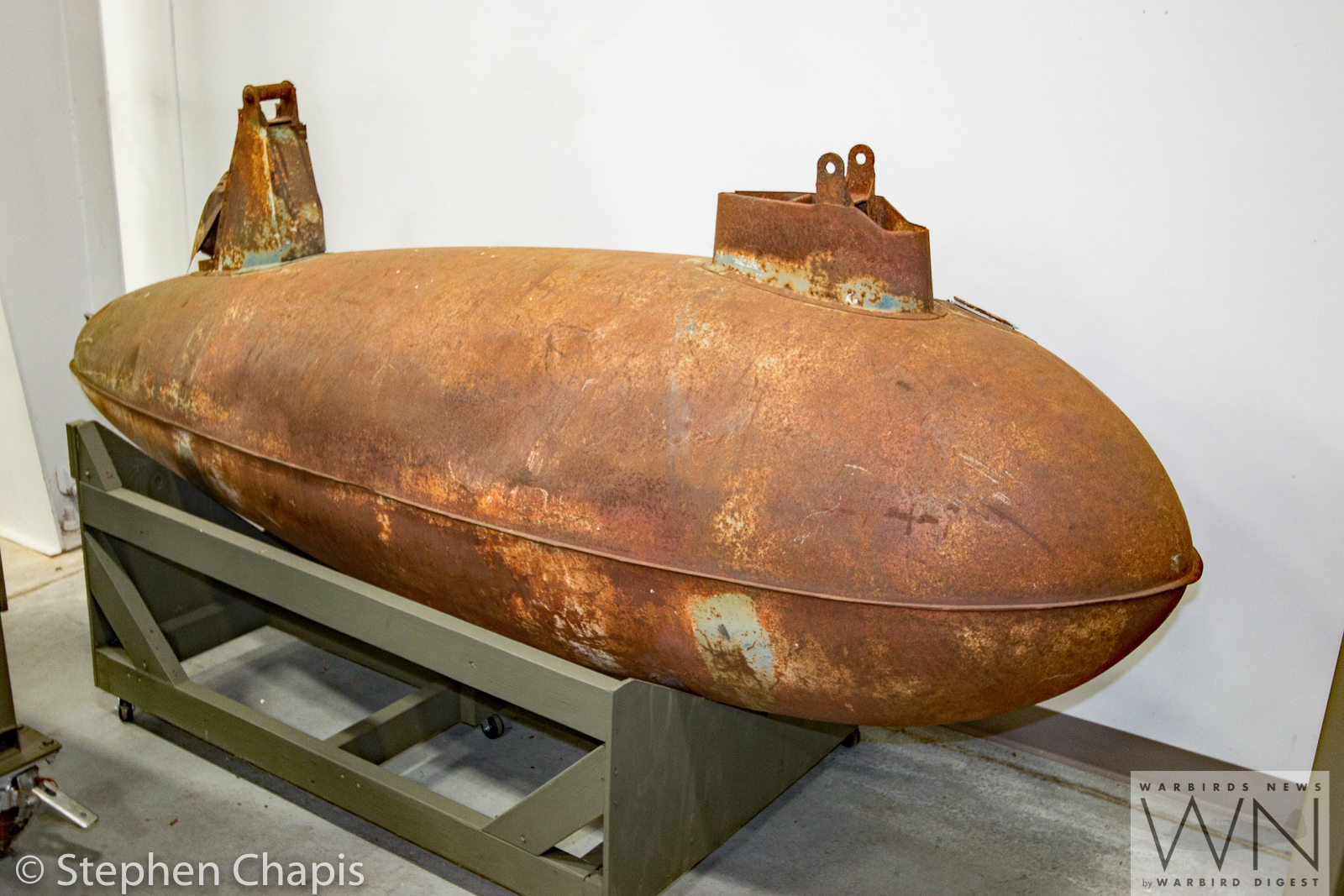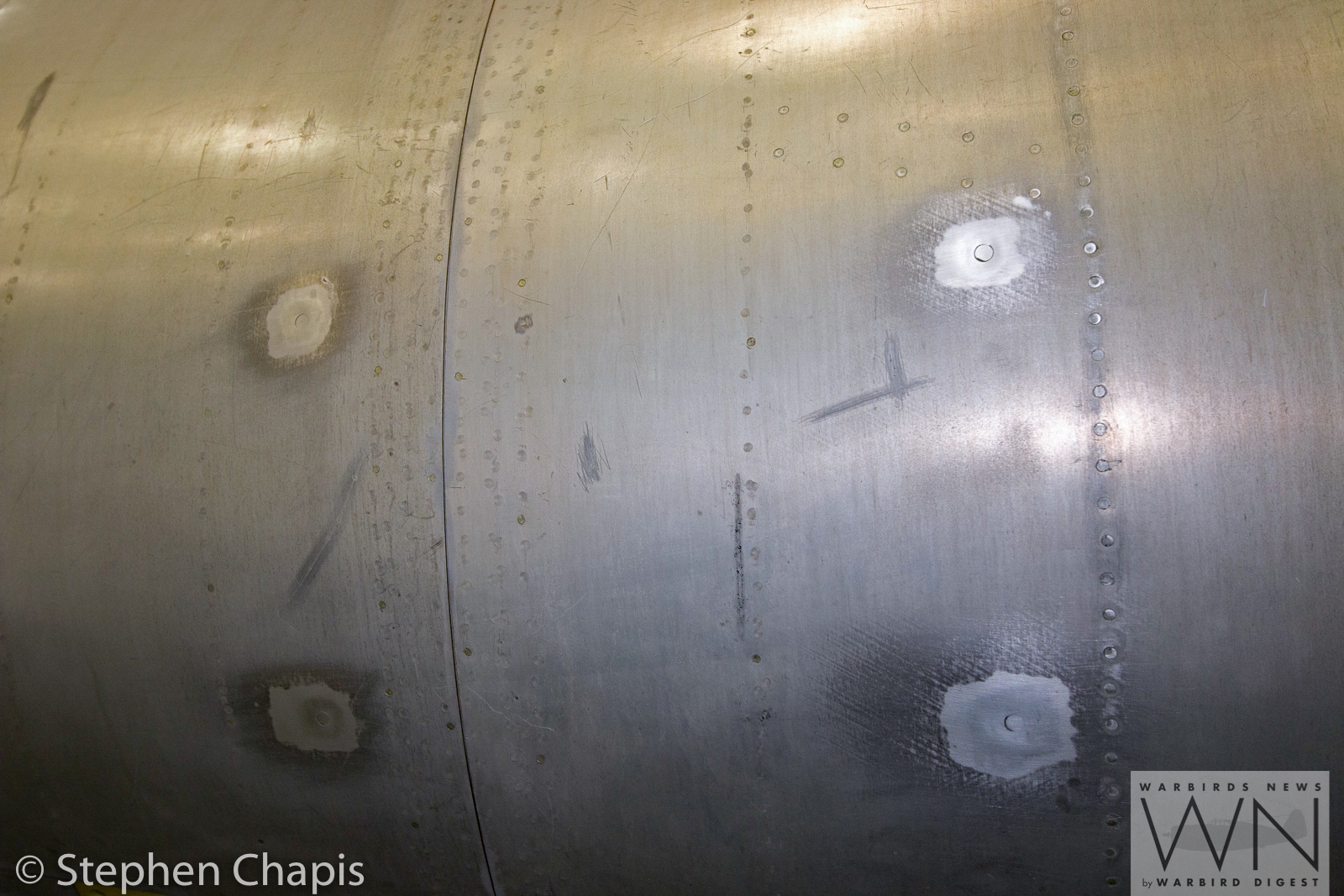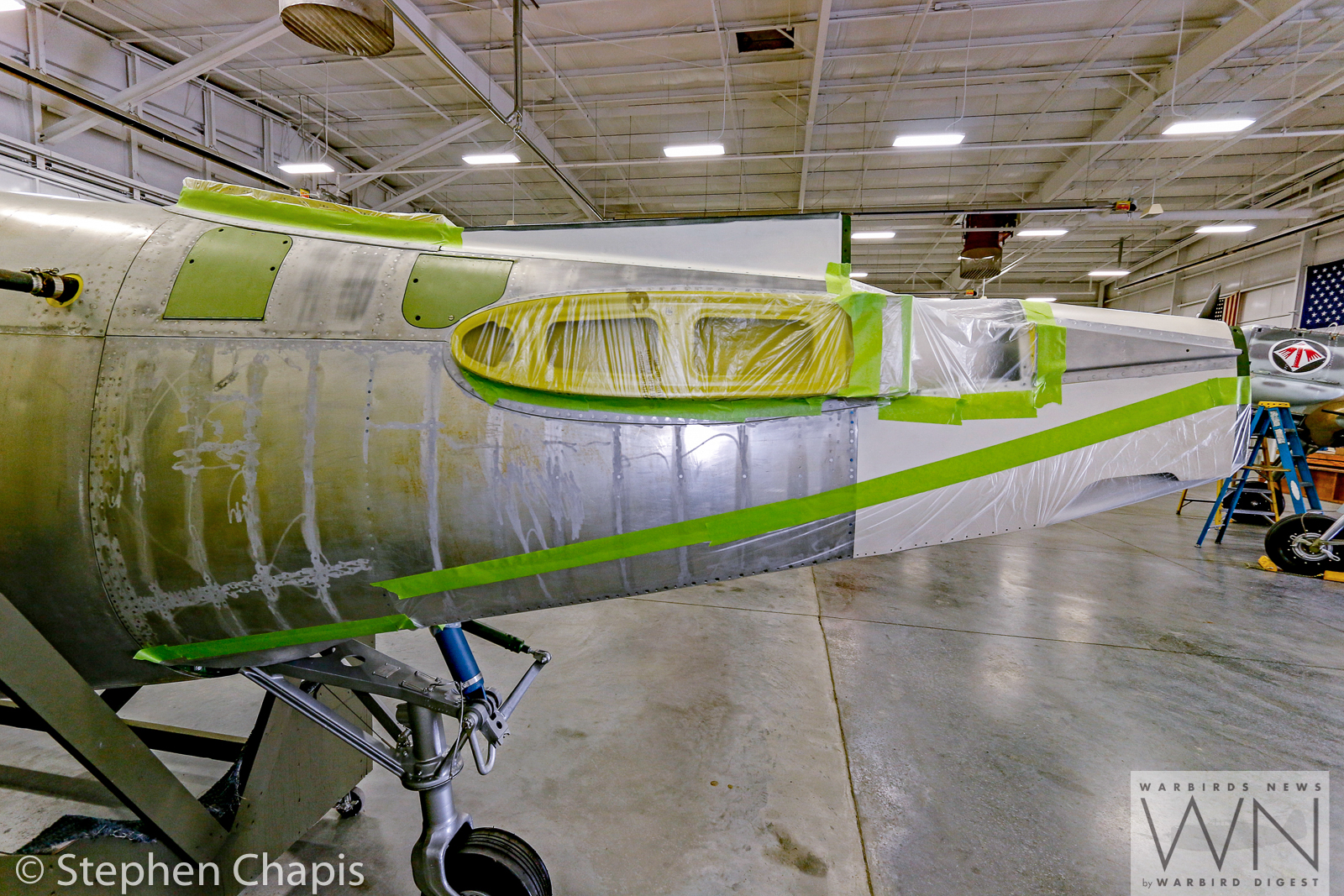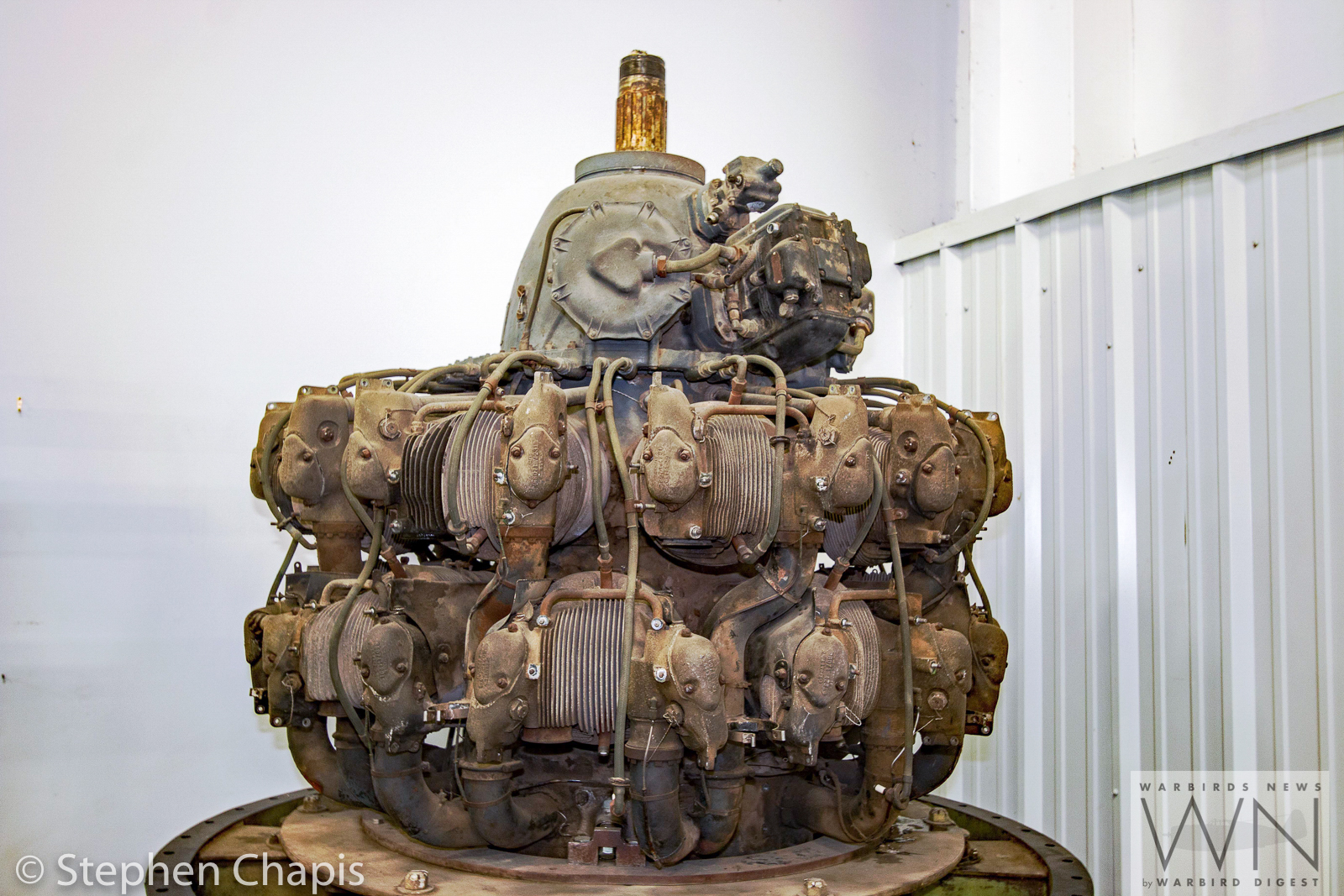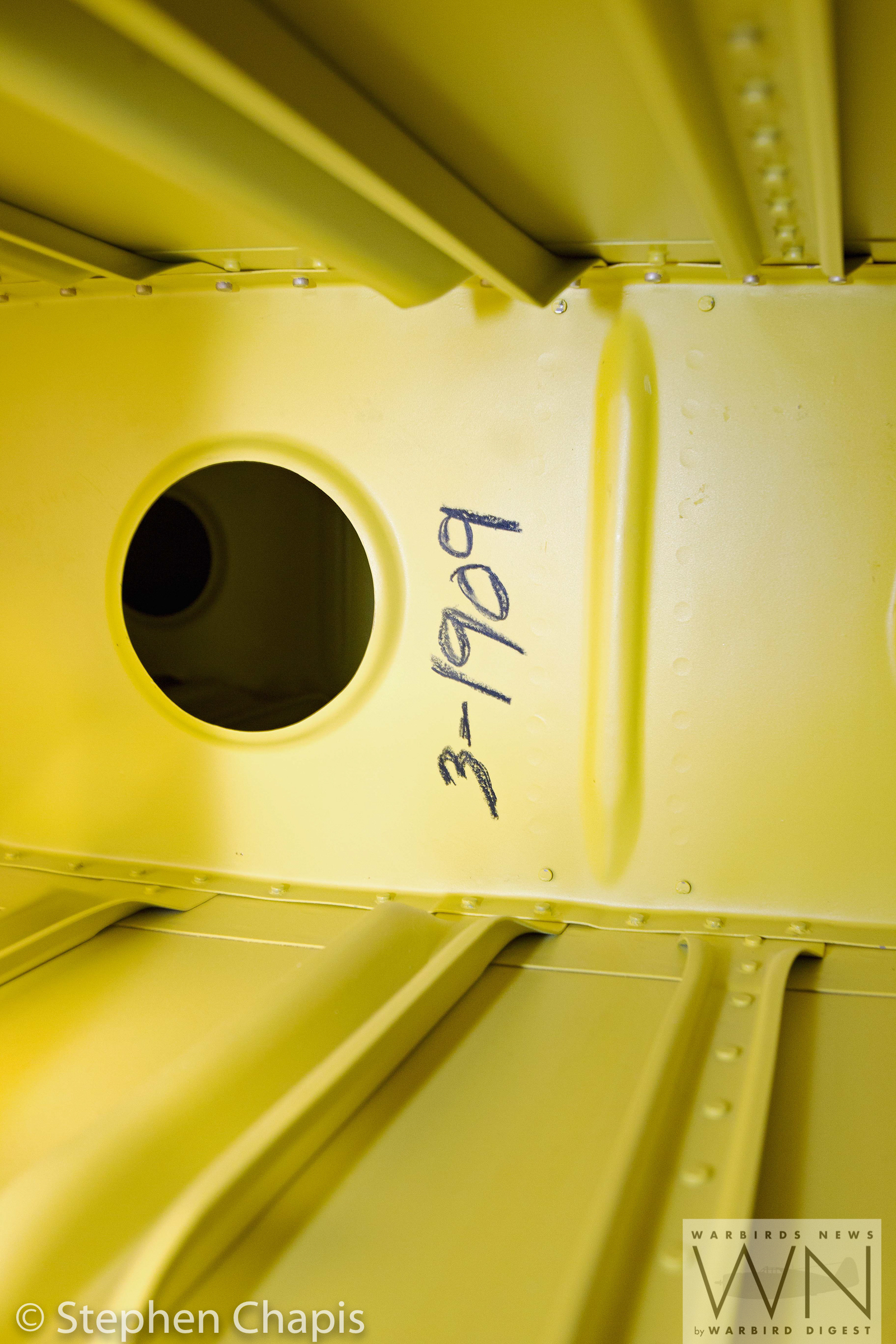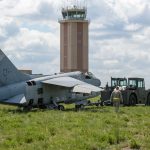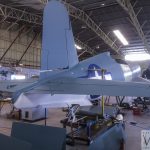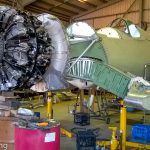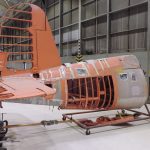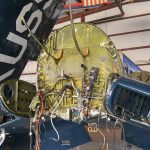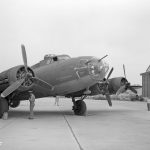It seems to be a week of Corsairs here at WarbirdsNews, so we hope you don’t mind reading a restoration report concerning a further example of the breed. Stephen Chapis, a long time contributor to Warbird Digest, brings us news from the Tri-State Warbird Museum in Batavia, Ohio and progress with the restoration of their FG-1D Corsair Bu.92132.
Tri-State’s Columbus Corsair
by Stephen Chapis
After spending nearly a decade on the sidelines while Paul Redlich and his team at the Tri-State Warbird Museum restored the Kiwi P-40M to award-winning condition (Warbird Grand Champion, EAA AirVenture Oshkosh 2016), work on Goodyear FG-1D Corsair BuNo 92132 is finally underway at the Cincinnati-based museum. After attending the 75th Anniversary Doolittle Reunion in April, Warbird Digest took a quick side trip to visit with Paul Redlich and see how work is progressing on the Corsair. The history of 92132 from delivery in May, 1945, to Tri-State’s acquisition in April, 2003 was well covered by the article “Poor Little Lambs” in Warbird Digest #49 (July/August 2013 – Click HERE to buy that issue), so here we will look at what has taken place in the preceding twelve months.
Though the Corsair received little work while the Kittyhawk was under restoration, Redlich continued to collect parts for the FG-1D including a pair of 150-gallon external tanks and a rare 275-gallon centerline tank, the latter of which was found in someone’s front yard in Virginia! Various parts such as ammo boxes, instruments, control surfaces, etc. are in storage for eventual installation in the aircraft.
The airframe also requires repairs, as Paul pointed out, “It was not treated lovingly, so there are a lot of dents and holes in it. During ‘Black Sheep’, this is the plane that always got shot down, so they strapped on smoke generators, which crushed some of the interior formers.”
Prior to Tri-State acquiring the Corsair, Mike Vadeboncoeur restored the wings. They are a thing of beauty, and feature tuff cell wiring, AC fittings, and gold AN hardware. However, some of this work will have to be undone as Paul explained, “We want to make this the most authentic, post-war, 1950s Corsair that we can. We’ve started to change the hardware in the wings to the correct blue AN and we’re looking for the 50s-vintage radio set and antennas that the Navy would have used at the time. We will hide the modern radios.”
The authenticity of this restoration will be heightened in that it retains the same 2,000-hp Pratt & Whitney R-2800-8A Double Wasp radial and propeller that was installed at the factory. The engine has not run since it failed while taxiing out for a Baa Baa Black Sheep sortie in 1977. Paul plans to keep the engine as original as possible, stating “This is an early 8A, which has an updraft carburetor, which love to catch fire, which is why most guys go to the CB16 with the downdraft carburetor, but we’re not going to do that. We’re going to retain the original carburetor.”
Currently Paul and his team are working on repairing damaged panels and manufacturing new ones to replace those which are missing or damaged beyond repair. At the time of our visit, they were just completing the horizontal stabilizers, which are complete with the correct factory inspector markings and stamps, something which will be done throughout the airframe. When the Corsair is complete, it will be finished as it appeared during its last military assignment while stationed at Naval Air Station Columbus, in Columbus, Ohio.







